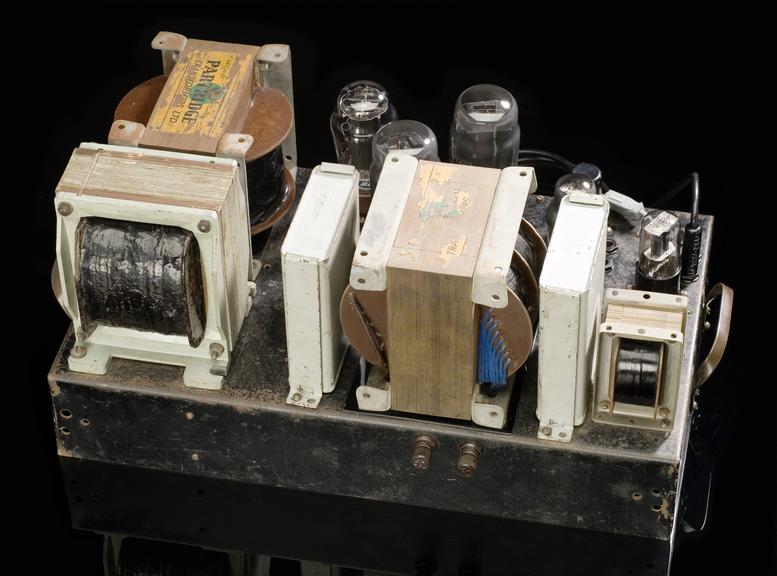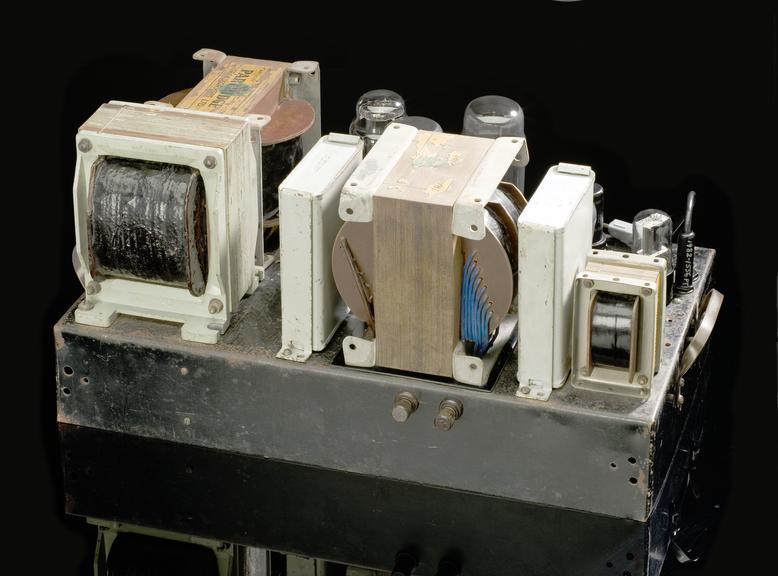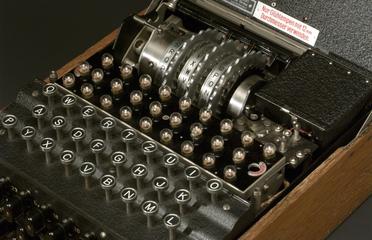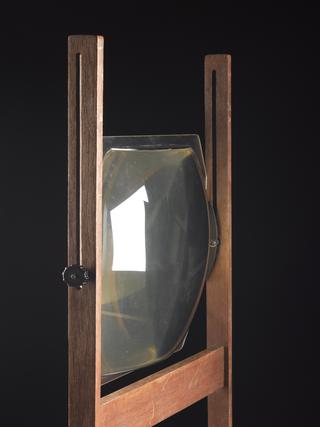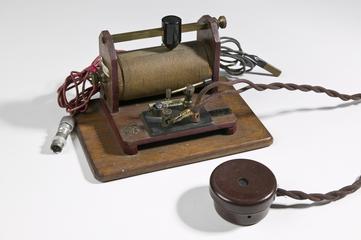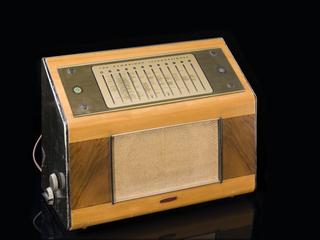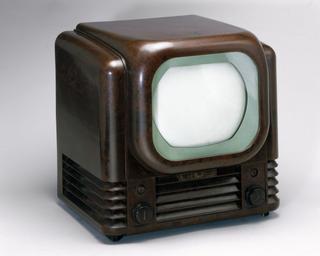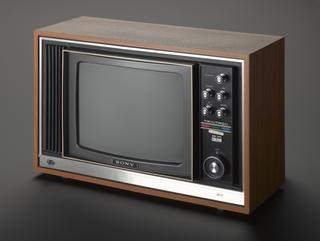
Home-constructed Williamson amplifier, c. 1949
- Made:
- circa 1949 in United Kingdom



Home-constructed Williamson amplifier, c. 1949
In 1948, vinyl replaced shellac for making gramophone discs, bringing near-silent sound reproduction. As a result, audio buffs needed better-quality amplifiers. This high-fidelity amplifier was designed by the British electronics engineer Theo Williamson. Instructions on how to built it appeared in the technical magazine 'Wireless World'.
Details
- Category:
- Radio Communication
- Object Number:
- 1982-1556
- Materials:
- steel (metal), iron, copper (metal), glass, plastic (unidentified), bakelite, fibreboard, textile and electronic components
- Measurements:
-
overall: 230 mm x 440 mm x 300 mm, 23.5kg
- type:
- amplifier
- credit:
- Geddes, W.J.

